Contents
Physical activity during Covid 19 is essential as more and more people are less active during the pandemic. New COVID-19 cases continue to emerge in Asia, Europe, Africa, and America, Australian continents. People are being asked to stay at home as much as possible. Doctors are advising not to go outside unless it is necessary. It is vital to make a routine for physical activity during the Covid 19 pandemic.
In November 2021, a SARS-CoV-2 coronavirus variant emerged and was named omicron by the WHO. The cases of the highly contagious variant and a subvariant called BA.2 caused surges of COVID-19 in areas where safety precautions were relaxed.
In many countries, gyms and fitness centres are temporarily closed. It is a significant challenge to stay at home for an extended period without any physical activity. People adopt sedentary behaviours, and a low amount of physical activity negatively affects health. Physical activity during Covid 19 helps us have better health in this troubled time.
WHO (World Health Organization recommends 150 minutes of moderate or 75 minutes of vigorous physical exercise every week. It may seem challenging to achieve that without going outside, but it is not impossible. Below are some tips on reducing sedentary behaviour and staying active while at home.
Physical activity during Covid 19 pandemic
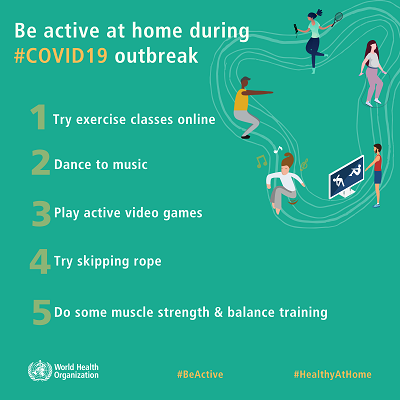
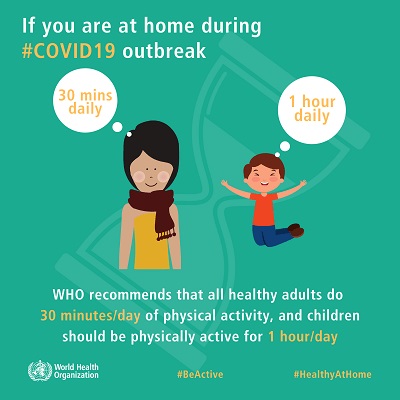
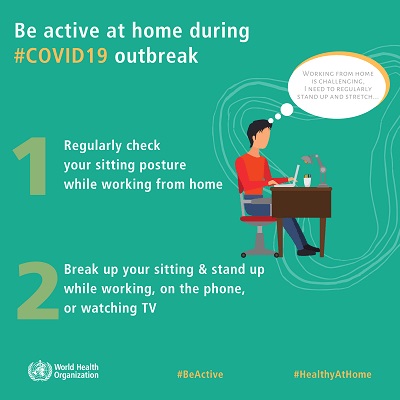
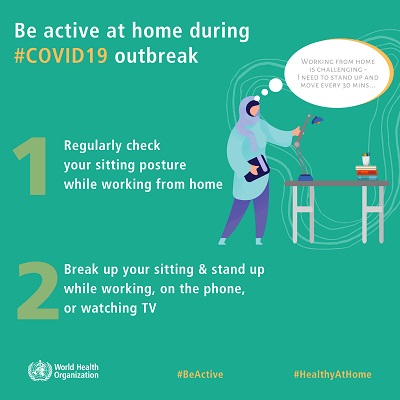
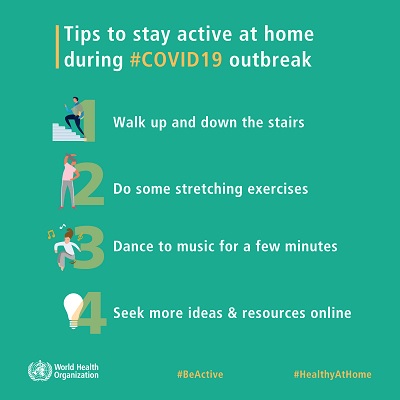
Surveys found that people are less physically active during the pandemic time. The results vary between different groups of people. Still, many statistical data and reports confirm that women are more active during pandemics. Men and young people are reported to have a less busy life with a massive increase in sedimentary time.
Physical activity during Covid 19: Recommended for your age group
WHO has recommended different amounts of physical activity for different age groups of people for their well-being.
Infants under one year of age
• All infants should be physically active several times a day.
• Infants should spend at least 30 minutes in the prone position (tummy time) through different floor-based play.
Children under five years
• All young children should exercise at least 180 minutes daily.
• 3 to 4-year-old children should spend at least 60 minutes in physical activity.
Children and adolescents aged 5-17 years
• All children and adolescents should do at least 60 minutes of physical activity every day.
• Doing more than 60 minutes of physical activity will give additional health benefits
Adults aged over 18 years
- All adults should do at least 150 minutes of moderate-intensity physical activity throughout the week or 75 minutes of vigorous-intensity physical activity throughout the week.
- Adults should increase their moderate-intensity physical activity to at least 300 minutes per week, or equivalent.
- Generally speaking, to develop and maintain musculoskeletal health, adults should do muscle-strengthening activities two or more days a week.
Seniors aged over 60 years
Older adults with poor mobility should do physical activity to enhance balance and prevent falls three or more days per week.
Guidelines: Physical Activity during Covid 19 pandemic
Take short active breaks during the day. Playing with children and performing household chores such as cleaning and gardening are ways to stay active at home.
Follow an online exercise class. You can take advantage of online exercise classes found on YouTube. But be cautious and aware of your limitations.
Walk. Walking around your house or garden will help you to remain active. When you are on call, walk around your home while you speak.
Stand up. Reduce your sedentary time by standing up. In other words, to interrupt sitting and reclining time every half an hour. Try cognitively stimulating activities, such as reading, board games, and puzzles instead of mobile or computer gaming.
Relax. Under those circumstances, Meditation and deep breaths can help you remain calm.
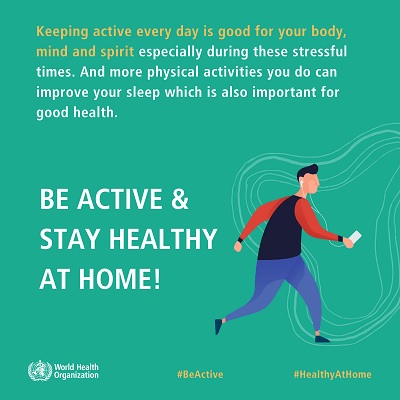
Some home-based exercises (Physical activity during Covid 19)
WHO -Europe prepared a set of examples of home-based exercises that people can do from home.
- Knee to the elbow.
- Plank
- Back extensions
- Squats
- Side knee lifts
- Bridge
- Chair dips
- Chest opener
- Child’s pose
- Seated meditation
- Legs up the wall
Physical activity could include
- Active recreation
- Sports participation
- Cycling
- Walking
- Play
- Dance
- Gardening
- House cleaning
- Carrying heavy shopping
Benefits of Physical Activities during Covid 19 pandemic
It is essential during Covid 19 pandemic to be physically active. Physical activities will provide you following benefits.
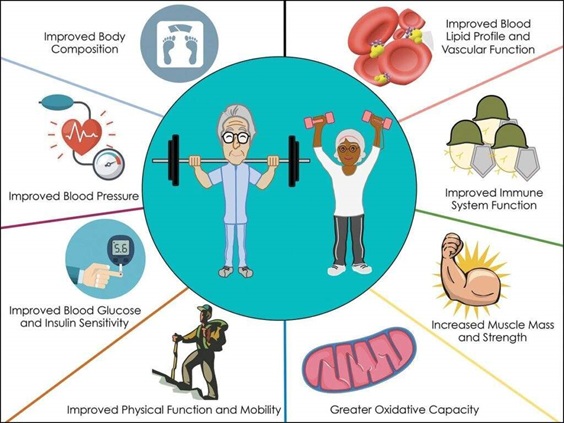
Physical activity during Covid 19
- Ease muscle strain
- Physical activity during Covid 19 relieves mental tension
- Improve blood circulation
- Improve muscle activity
- Strengthening and maintaining your immune system strength
- Physical activity during Covid 19 reduces high blood pressure
- Weight management
- Reduces the risk of heart disease
- Reduces the risk of diabetes
- Lowers the risk of stroke
- Reduces the risk of certain cancers
- Improves bone and muscle strength
- Improves balance
- Enhance flexibility
- Improves mental health while staying indoor
- Reduces the risk of depression while maintaining covid protocols
- Additionally reduces the risk of cognitive decline
- Delays the onset of dementia
- Improves overall feeling of well-being
In children, physical activity will provide the below benefits. (Physical activity during Covid 19)
- Support healthy growth and development
- Reduce the risk of disease in later life
- Help in the development of fundamental movement skills
Benefits of Strength and Balance Training
- Improves blood liquid profile
- Enhances the vascular function
- Improves immune function
- Builds and maintains muscle mass
- Increases the oxidative capacity
- Helps to maintain independence and functional status
- Improves the ageing trajectory
- Blood glucose sensitivity is improved
- It improves blood pressure and is a healthy way to manage blood pressure
- Improves body composition as this helps to maintain a healthy weight over time
To summarize, you must indulge in appropriate physical activities to reap the benefits and keep yourself healthy.
References
- Clemente-Suárez, V. J., Beltrán-Velasco, A. I., Ramos-Campo, D. J., Mielgo-Ayuso, J., Nikolaidis, P. A., Belando, N., & Tornero-Aguilera, J. F. (2022). Physical activity and COVID-19. The basis for an efficient intervention in times of COVID-19 pandemic. Physiology & Behavior, 244(113667), 113667. https://doi.org/10.1016/j.physbeh.2021.113667
- Després, J.-P. (2021). Severe COVID-19 outcomes – the role of physical activity. Nature Reviews. Endocrinology, 17(8), 451–452. https://doi.org/10.1038/s41574-021-00521-1
- #HealthyAtHome – physical activity. (n.d.). Who.int. Retrieved August 2, 2022, from https://www.who.int/news-room/campaigns/connecting-the-world-to-combat-coronavirus/healthyathome/healthyathome—physical-activity
- Related People Example. (2020, April 3). Importance of physical activity and exercise during the COVID-19 pandemic. Psychiatry. https://medicine.umich.edu/dept/psychiatry/michigan-psychiatry-resources-covid-19/your-lifestyle/importance-physical-activity-exercise-during-covid-19-pandemic
- Woods, J. A., Hutchinson, N. T., Powers, S. K., Roberts, W. O., Gomez-Cabrera, M. C., Radak, Z., Berkes, I., Boros, A., Boldogh, I., Leeuwenburgh, C., Coelho-Júnior, H. J., Marzetti, E., Cheng, Y., Liu, J., Durstine, J. L., Sun, J., & Ji, L. L. (2020). The COVID-19 pandemic and physical activity. Sports Medicine and Health Science, 2(2), 55–64. https://doi.org/10.1016/j.smhs.2020.05.006
- (N.d.). Researchgate.net. Retrieved August 2, 2022, from https://www.researchgate.net/publication/340794446_Physical_activity_and_coronavirus_disease_2019_COVID-19_specific_recommendations_for_home-based_physical_training
